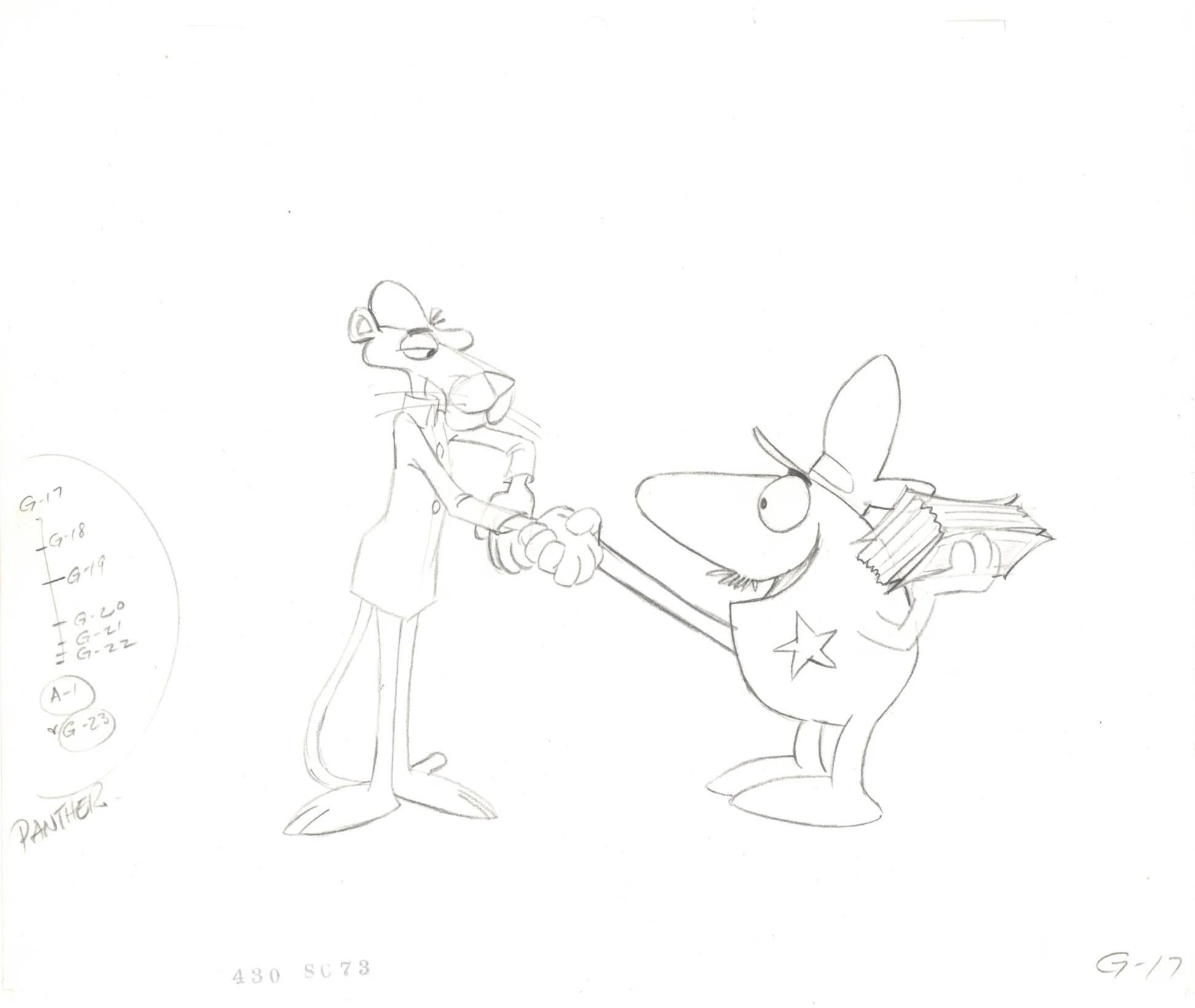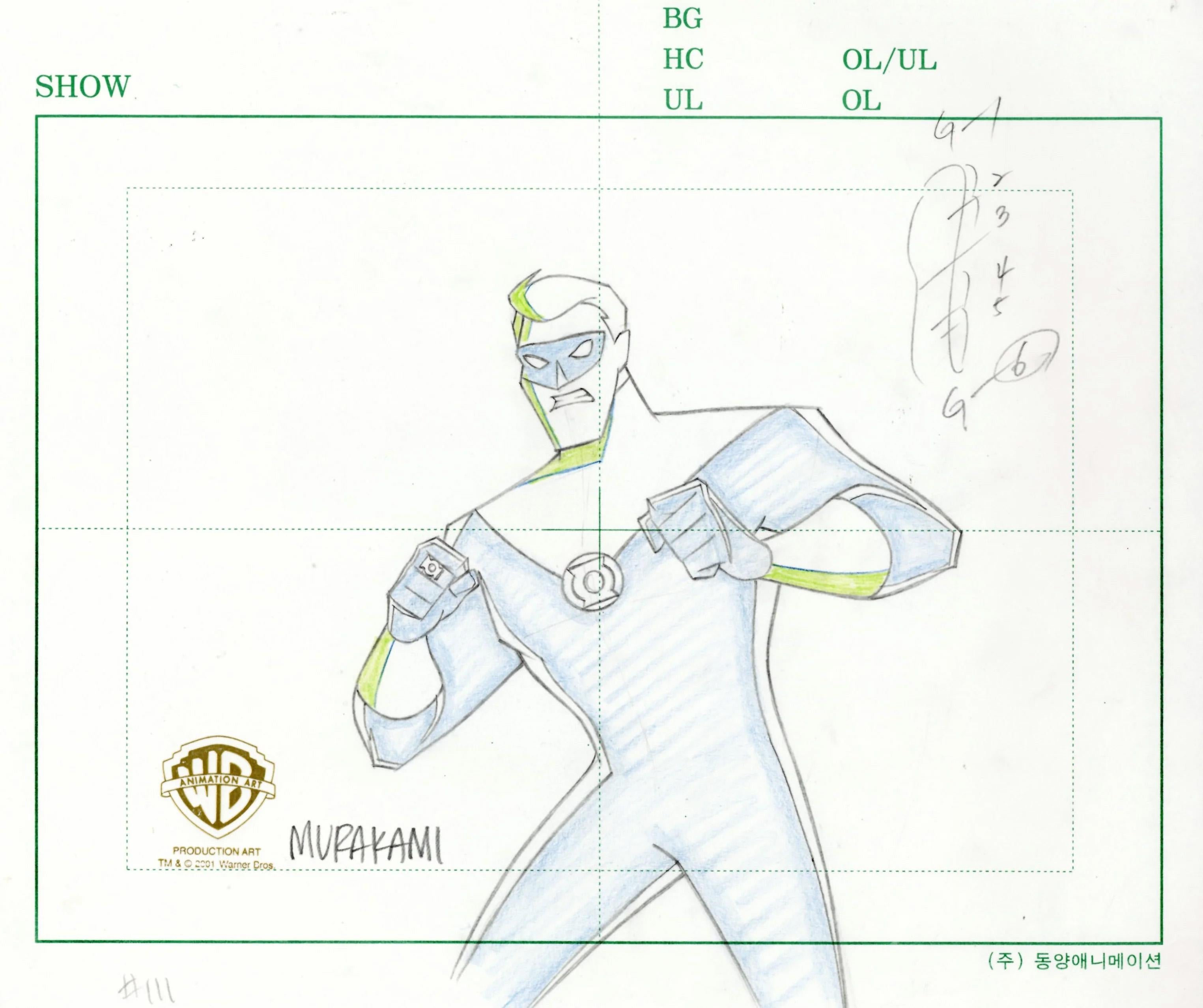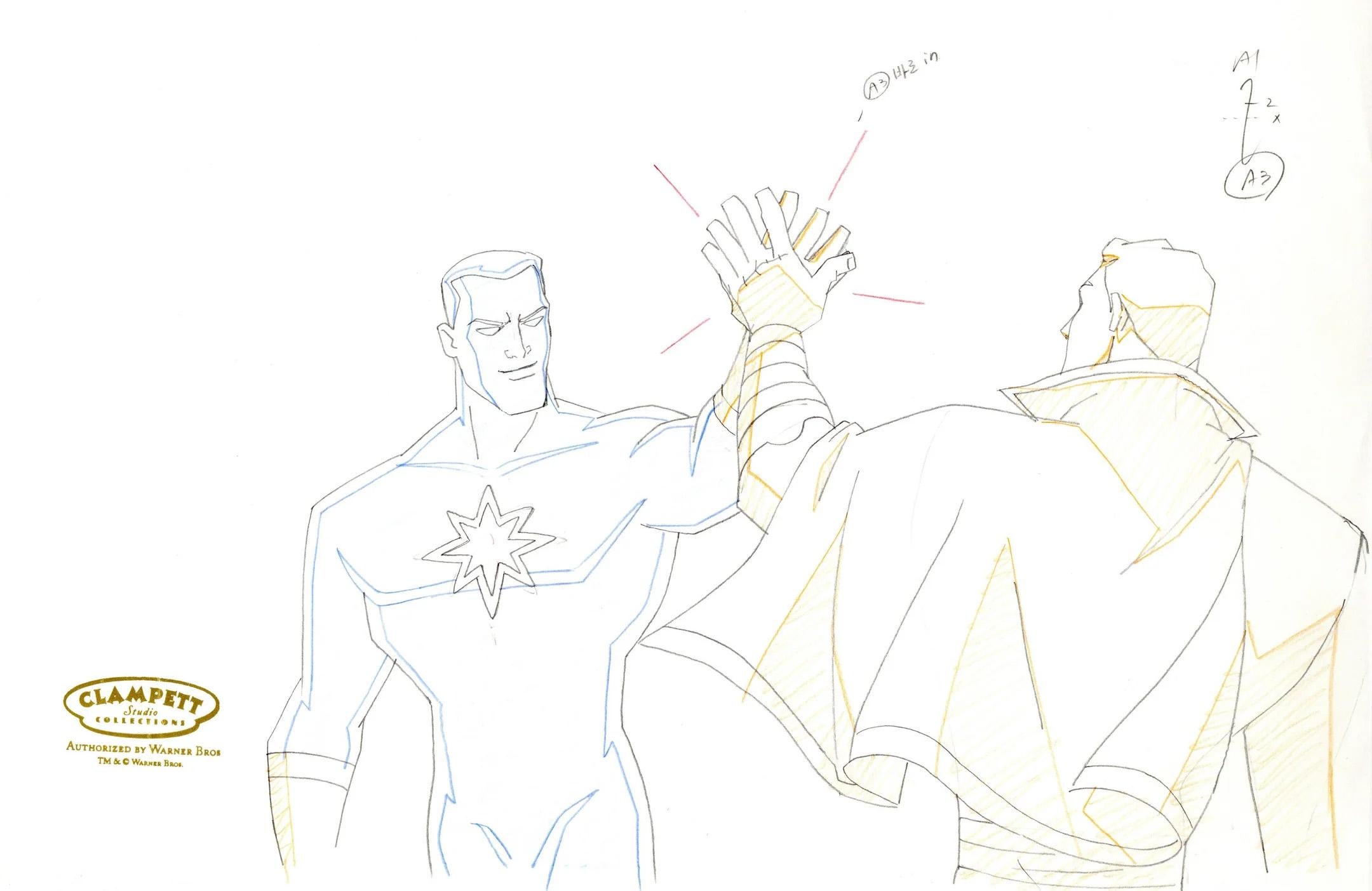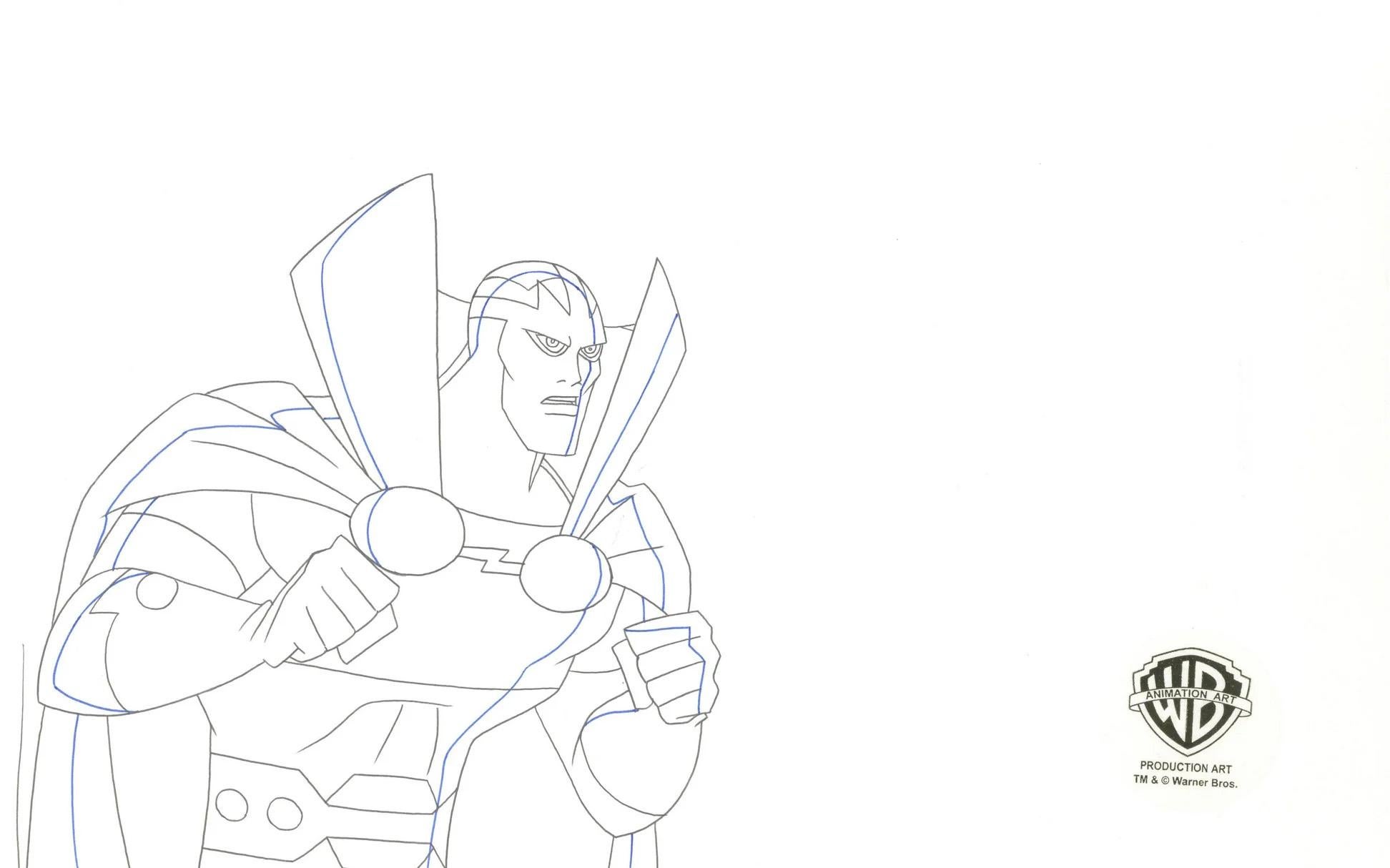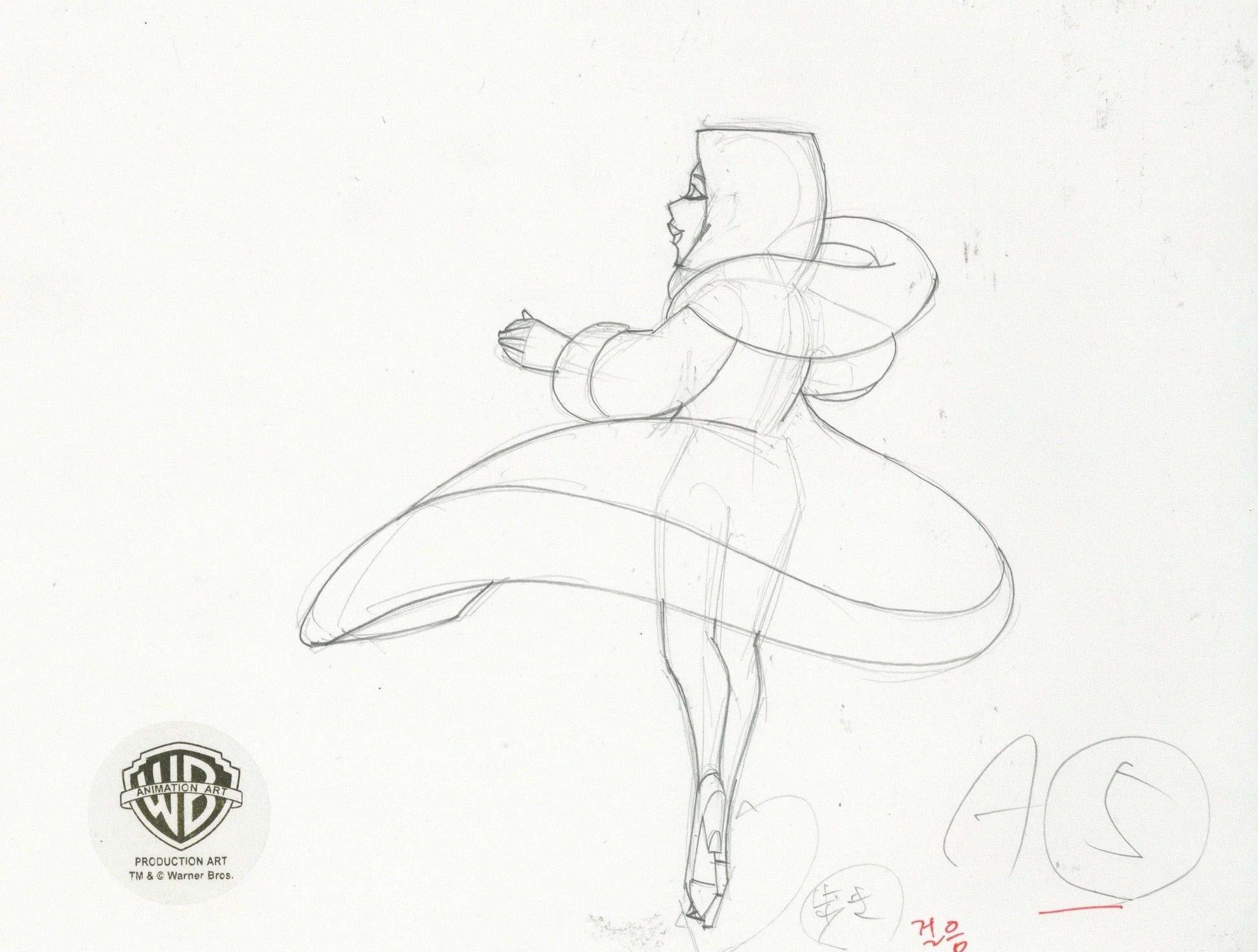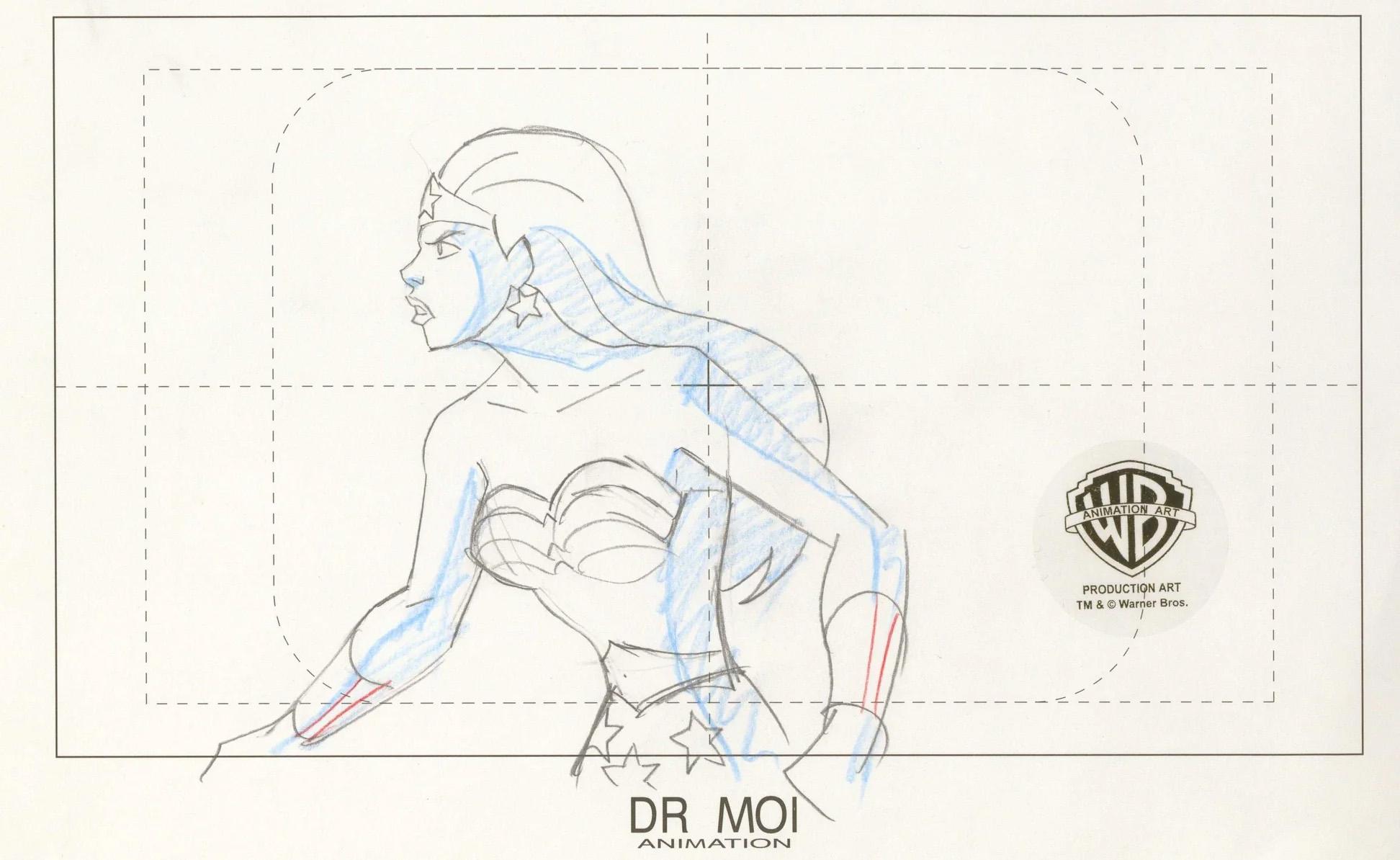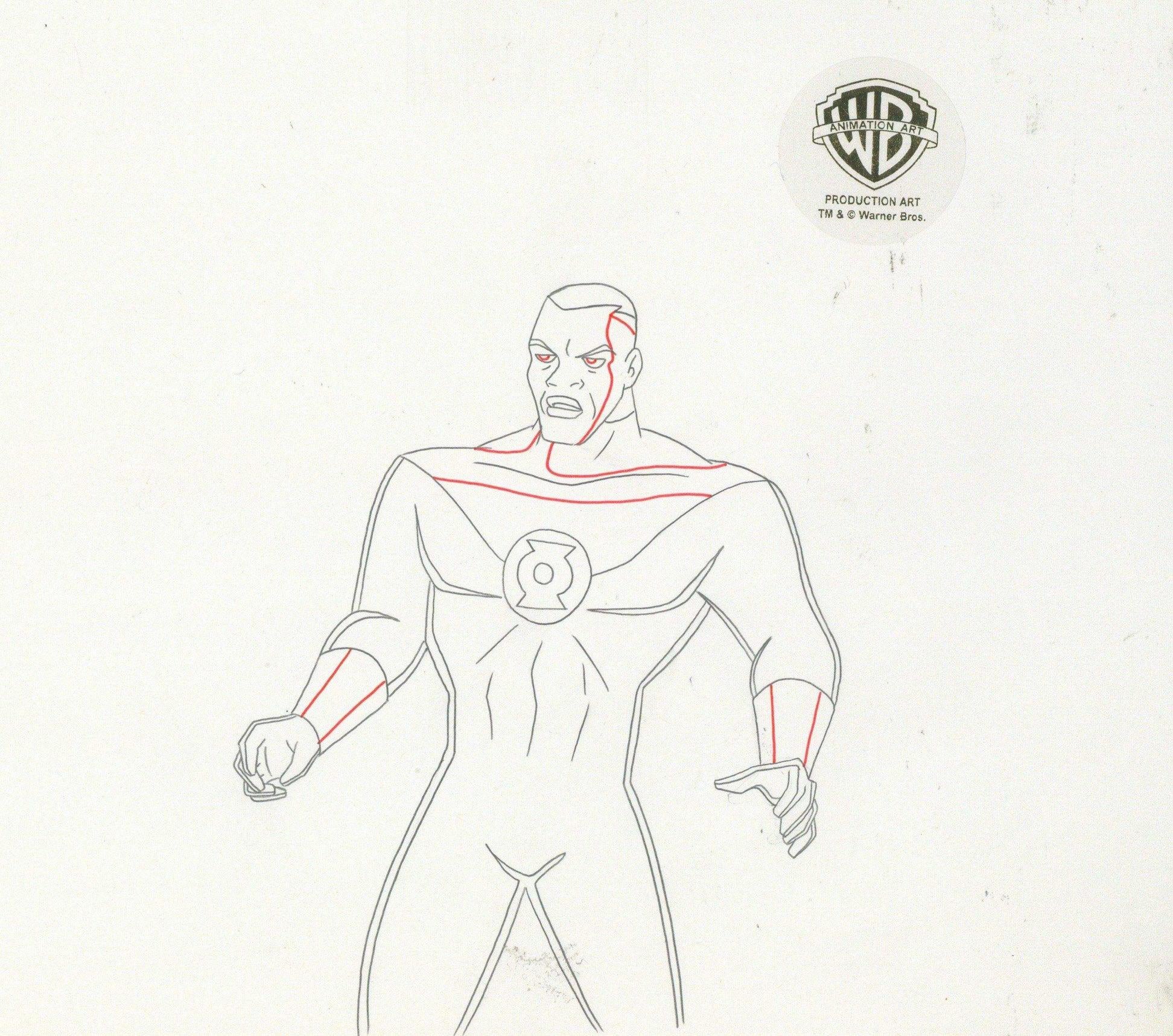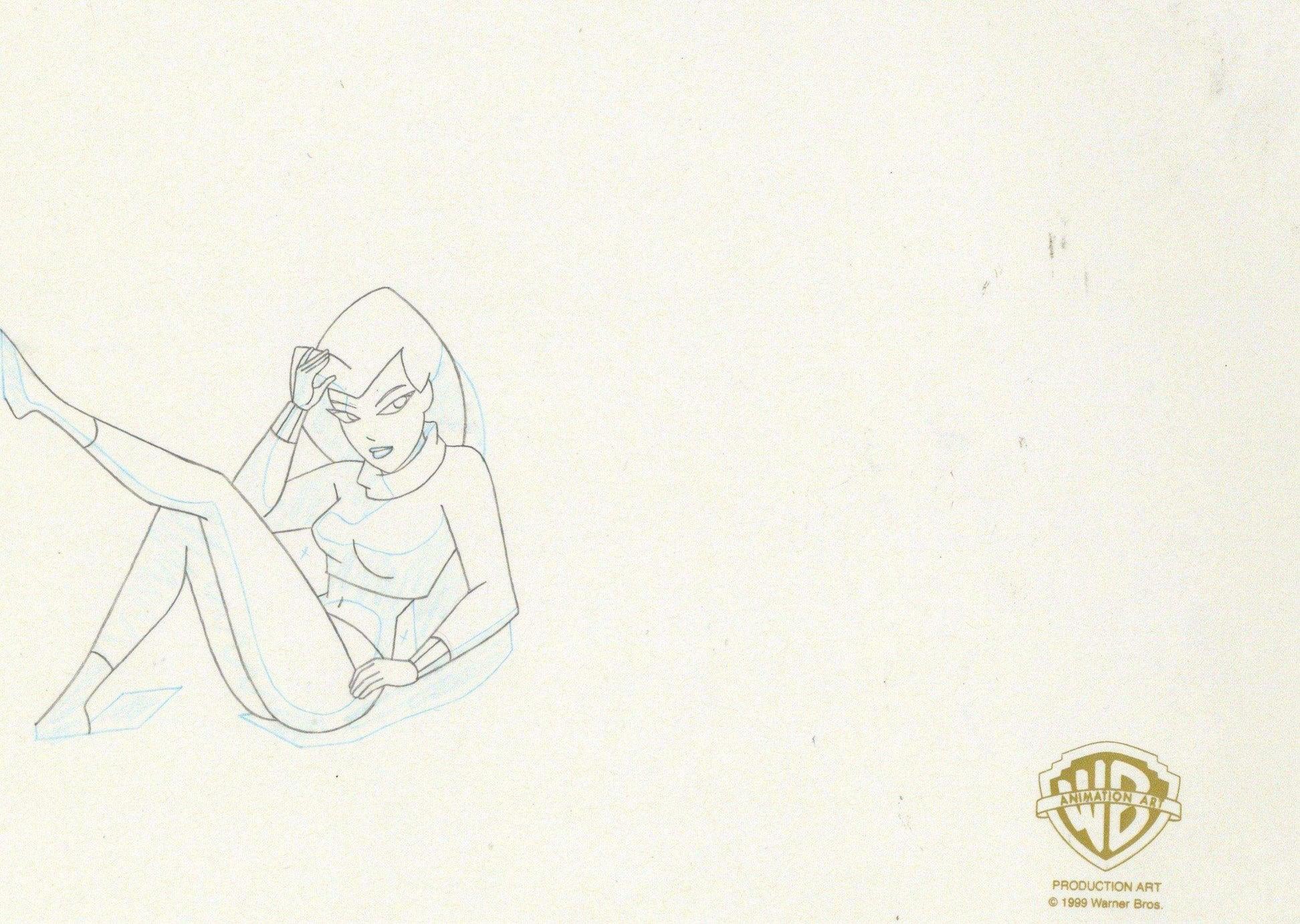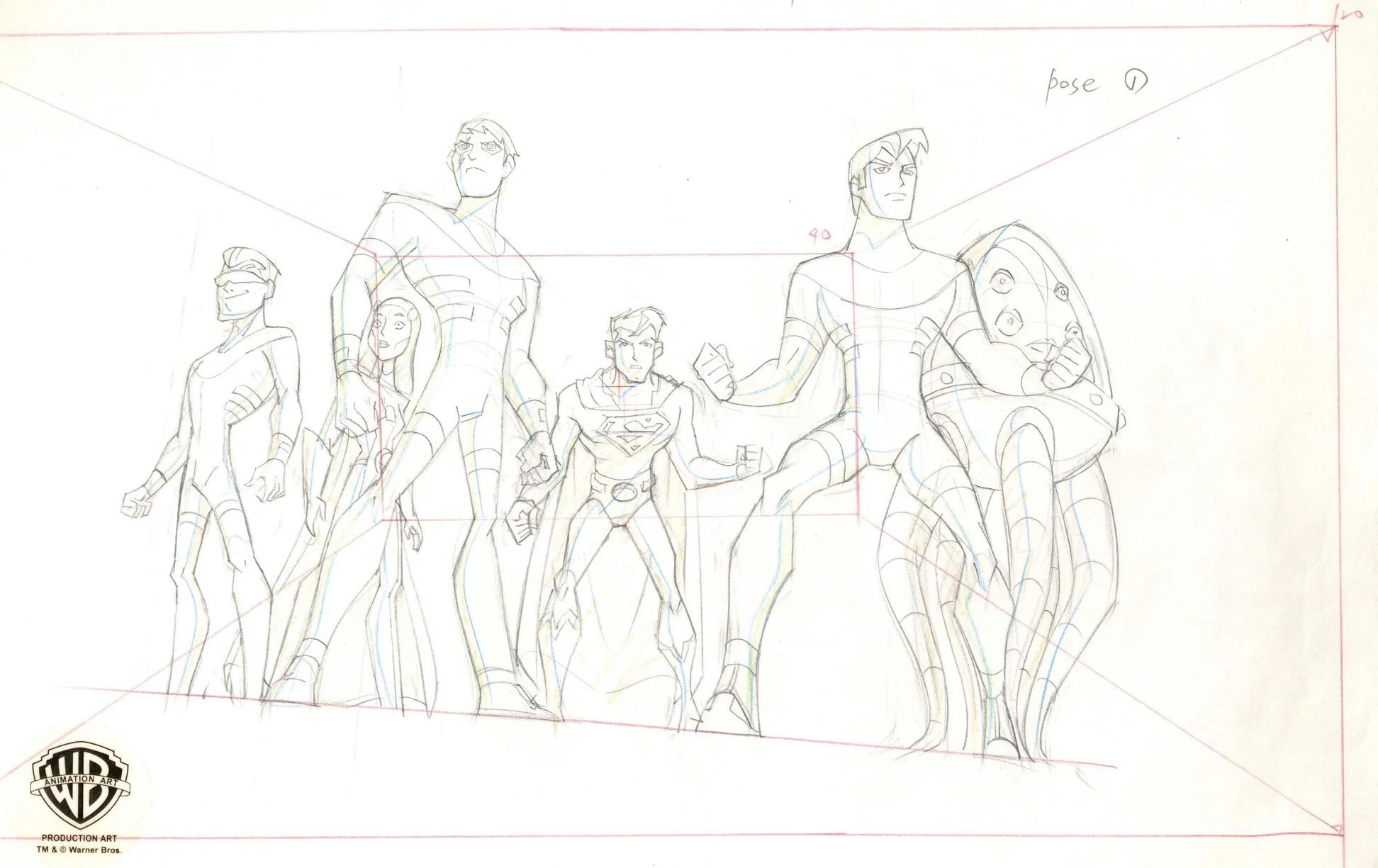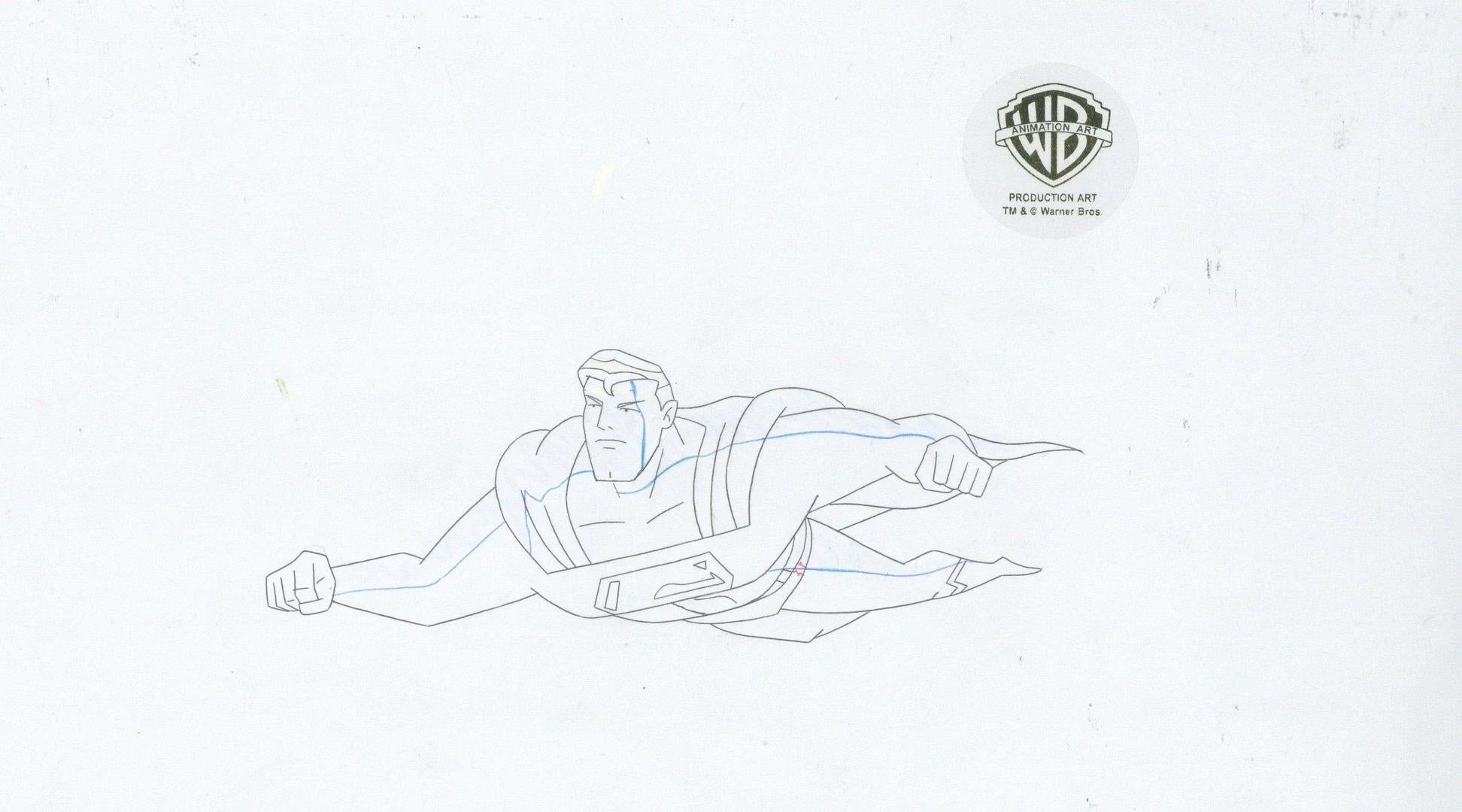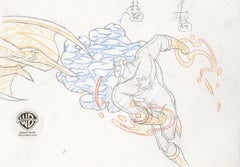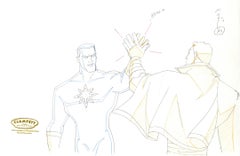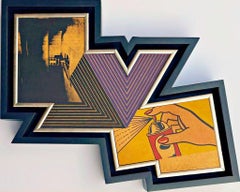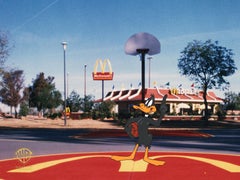
McDonald's NBA Commercial Original Production Cel: Daffy Duck
View Similar Items
Want more images or videos?
Request additional images or videos from the seller
1 of 2
Looney Tunes Studio ArtistsMcDonald's NBA Commercial Original Production Cel: Daffy Duck1995
1995
About the Item
About the Seller
4.7
Vetted Seller
These experienced sellers undergo a comprehensive evaluation by our team of in-house experts.
Established in 2022
1stDibs seller since 2022
58 sales on 1stDibs
Typical response time: 11 hours
Authenticity Guarantee
In the unlikely event there’s an issue with an item’s authenticity, contact us within 1 year for a full refund. DetailsMoney-Back Guarantee
If your item is not as described, is damaged in transit, or does not arrive, contact us within 7 days for a full refund. Details24-Hour Cancellation
You have a 24-hour grace period in which to reconsider your purchase, with no questions asked.Vetted Professional Sellers
Our world-class sellers must adhere to strict standards for service and quality, maintaining the integrity of our listings.Price-Match Guarantee
If you find that a seller listed the same item for a lower price elsewhere, we’ll match it.Trusted Global Delivery
Our best-in-class carrier network provides specialized shipping options worldwide, including custom delivery.More From This Seller
View AllThe Pink Panther Original Production Drawing
Located in Los Angeles, CA
MEDIUM: Original Production Drawing
IMAGE SIZE: 16" x 12.5"
PRODUCTION: The Pink Panther
SKU: CCV2950
COMES WITH CERTIFICATE OF AUTHENTICITY
ABOUT THE IMAGE: The Pink Panther animat...
Category
1960s Pop Art More Art
Materials
Paper, Pencil
Justice League Unlimited Original Production Drawing: Captain Atom
Located in Los Angeles, CA
MEDIUM: Original Production Drawing
IMAGE SIZE: 10.5" x 8.5"
PRODUCTION: Justice League Unlimited
SKU: IFA6840
ABOUT THE IMAGE: Justice League Unlimited is a 2004–2006 American superhero animated television series that was produced by Warner Bros. Animation and aired on Cartoon Network...
Category
Early 2000s Pop Art More Art
Materials
Paint, Paper, Pencil
Superman the Animated Series Original Prod. Drawing: Kyle Rayner / Green Lantern
Located in Los Angeles, CA
SIGNED BY GLEN MURAKAMI
MEDIUM: Original Production Drawing
IMAGE SIZE: 10.5" x 9.5"
PRODUCTION: Superman the Animated Series
SKU: IFA6944
ABOUT THE IMAGE: Superman: The Animated S...
Category
1990s Pop Art More Art
Materials
Paint, Paper, Pencil
Justice League Unlimited Original Prod. Drawing: Captain Atom, Captain Marvel
Located in Los Angeles, CA
MEDIUM: Original Production Drawing
IMAGE SIZE: 14" x 9.5"
PRODUCTION: Justice League Unlimited
SKU: IFA9438
ABOUT THE IMAGE: Justice League Unlimited (JLU) is a 2004-2006 American ...
Category
Early 2000s Pop Art More Art
Materials
Paint, Paper, Pencil
Justice League Original Double Aperture Drawing: Martian Manhunter, The Flash
Located in Los Angeles, CA
MEDIUM: Original Production Double Aperture Drawing
IMAGE SIZE: 11.5" x 8.5"
PRODUCTION: Justice League
SKU: IFA9564
ABOUT THE IMAGE: Justice League i...
Category
Early 2000s Pop Art More Art
Materials
Paint, Paper, Pencil
The New Batman Adventures Original Production Drawing: Poison Ivy
Located in Los Angeles, CA
MEDIUM: Original Production Drawing
IMAGE SIZE: 10.5" x 9.5"
PRODUCTION: The New Batman Adventures, Holiday Knights
SKU: IFA3673
ABOUT THE IMAGE: The New Batman Adventures is an Am...
Category
1990s Pop Art More Art
Materials
Paint, Paper, Pencil
You May Also Like
Edgar Plans Sketch Book Signed & Numbered with Hand Finished Doodle
By Edgar Plans
Located in Draper, UT
Book with sketch
11 × 8 in
27.9 × 20.3 cm
Edition 547/1000
Category
2010s Pop Art More Prints
Materials
Archival Paper, Carbon Pencil, Color Pencil
Monograph: Christo The Gates Project for Central Park NYC (Signed and Inscribed)
By Christo
Located in New York, NY
Super rare original signed The Gates proposal book for famous art critic:
Christo: The Gates Project for Central Park New York City (Hand Signed and Inscribed to art critic Anthony ...
Category
1980s Pop Art Landscape Prints
Materials
Mixed Media, Pencil, Offset, Board, Lithograph
Exposures (Deluxe Edition) Hand Signed and Numbered by Andy Warhol, Official COA
By Andy Warhol
Located in New York, NY
Andy Warhol
Deluxe Collectors' Edition of Exposures (Hand Signed and Numbered), 1979
Hardcover Monograph in leather with gilt edge and stamped in gilt.
Hand signed by Andy Warhol on...
Category
1970s Pop Art More Art
Materials
Mixed Media, Lithograph, Offset, Graphite
Richard Pettibone The Appropriation Warhol, Stella, Lichtenstein, Unique Signed
By Richard Pettibone
Located in New York, NY
Richard Pettibone
The Appropriation Print Andy Warhol, Frank Stella, Roy Lichtenstein, 1970
Silkscreen in colors on masonite board (unique variant on sculpted board)
Hand-signed by artist, Signed and dated on the front (see close up image)
Bespoke frame Included
This example of Pettibone's iconic Appropriation Print is silkscreened on masonite board rather than paper, giving it a different background hue, and enabling it work to be framed so uniquely.
The Appropriation print is one of the most coveted prints Pettibone ever created ; the regular edition is on a full sheet with white background; the present example was silkscreened on board, allowing it to be framed in 3-D. While we do not know how many examples of this graphic work Pettibone created, so far the present work is the only one example we have ever seen on the public market since 1970. (Other editions of The Appropriation Print have been printed on vellum, wove paper and pink and yellow paper.)
This 1970 homage to Andy Warhol, Frank Stella and Roy Lichtenstein exemplifies the type of artistic appropriation he was engaging in early on during the height of the Pop Art movement - long before more contemporary artists like Deborah Kass, Louise Lawler, etc. followed suit.
This silkscreen was in its original 1970 vintage period frame; a bespoke custom hand cut black wood outer frame was subsequently created especially to house the work, giving it a distinctive sculptural aesthetic.
Measurements:
Framed 14.5 inches vertical by 18 inches horizontal by 2 inches
Work
13 inches vertical by 16.5 inches horizontal
Richard Pettibone biography:
Richard Pettibone (American, b.1938) is one of the pioneering artists to use appropriation techniques. Pettibone was born in Los Angeles, and first worked with shadow boxes and assemblages, illustrating his interest in craft, construction, and working in miniature scales. In 1964, he created the first of his appropriated pieces, two tiny painted “replicas” of the iconic Campbell’s soup cans by Andy Warhol (American, 1928–1987). By 1965, he had created several “replicas” of paintings by American artists, such as Warhol, Roy Lichtenstein (1923–1997), Ed Ruscha (b.1937), and others, among them some of the biggest names in Pop Art. Pettibone chose to recreate the work of leading avant-garde artists whose careers were often centered on themes of replication themselves, further lending irony to his work. Pettibone also created both miniature and life-sized sculptural works, including an exact copy of Bicycle Wheel by Marcel Duchamp (French, 1887–1968), and in the 1980s, an entire series of sculptures of varying sizes replicating the most famous works of Constantin Brancusi (Romanian, 1876–1957). In more recent years, Pettibone has created paintings based on the covers of poetry books by Ezra Pound, as well as sculptures drawn from the grid compositions of Piet Mondrian (Dutch, 1872–1944). Pettibone straddles the lines of appropriation, Pop, and Conceptual Art, and has received critical attention for decades for the important questions his work raises about authorship, craftsmanship, and the original in art. His work has been exhibited at the Institute for Contemporary Art in Philadelphia, the Museum of Modern Art in New York, the Museum of Contemporary Art in Miami, and the Laguna Art Museum in Laguna Beach, CA. Pettibone is currently based in New York.
"I wished I had stuck with the idea of just painting the same
painting like the soup can and never painting another painting.
When someone wanted one, you would just do another one.
Does anybody do that now?"
Andy Warhol, 1981
Since the mid-1960s, Richard Pettibone has been making
hand-painted, small-scale copies of works by other artists — a
practice due to which he is best known as a precursor of appropriation art — and for a decade now, he has been revisiting subjects from across his career. In his latest exhibitions at
Castelli Gallery, Pettibone has been showing more of the “same”
paintings that had already been part of his 2005–6 museum retrospective,1
and also including “new” subject matter drawn from
his usual roster of European modernists and American postwar
artists. Art critic Kim Levin laid out some phases of the intricate spectrum from copies to repetitions in her review of the
Warhol-de Chirico showdown, a joint exhibition at the heyday
of appropriation art in the mid-1980s when Warhol’s appropriations of de Chirico’s work effectively revaluated “the grand
old auto-appropriator”.
Upon having counted well over a dozen
Disquieting Muses by de Chirico, Levin speculated: “Maybe he
kept doing them because no one got the point. Maybe he needed the money. Maybe he meant it when he said his technique
had improved, and traditional skills were what mattered.”
On
the other side, Warhol, in her eyes, was the “latter-day exemplar
of museless creativity”.
To Pettibone, traditional skills certainly
still matter, as he practices his contemporary version of museless creativity. He paints the same painting again and again,
no matter whether anybody shows an interest in it or not. His
work, of course, takes place well outside the historical framework of what Levin aptly referred to as the “modern/postmodern wrestling match”,
but neither was this exactly his match
to begin with.
Pettibone is one of appropriation art’s trailblazers, but his diverse
selection of sources removes from his work the critique of the
modernist myth of originality most commonly associated with
appropriation art in a narrow sense, as we see, for example, in
Sherrie Levine’s practice of re-photographing the work of Walker
Evans and Edward Weston. In particular, during his photorealist
phase of the 1970s, Pettibone’s sources ranged widely across
several art-historical periods. His appropriations of the 1980s
and 1990s spanned from Picasso etchings and Brancusi sculptures to Shaker furniture and even included Ezra Pound’s poetry.
Pettibone has professed outright admiration for his source artists, whose work he shrinks and tweaks to comic effect but, nevertheless, always treats with reverence and care. His response
to these artists is primarily on an aesthetic level, owing much
to the fact that his process relies on photographs. By the same
token, the aesthetic that attracts him is a graphic one that lends
itself to reproduction. Painstakingly copying other artists’ work by hand has been a way of making
it his own, yet each source is acknowledged in
his titles and, occasionally, in captions on white
margins that he leaves around the image as an
indication that the actual source is a photographic image. The enjoyment he receives in copying
is part of the motivation behind doing it, as is
the pleasure he receives from actually being with
the finished painting — a considerable private
dimension of his work. His copies are “handmade
readymades” that he meticulously paints in great quantities in his studio upstate in New York; the commitment
to manual labor and the time spent at material production has
become an increasingly important dimension of his recent work.
Pettibone operates at some remove from the contemporary art
scene, not only by staying put geographically, but also by refusing to recoup the simulated lack of originality through the
creation of a public persona.
In so doing, Pettibone takes a real
risk. He places himself in opposition to conceptualism, and he is
apprehensive of an understanding of art as the mere illustration
of an idea. His reading of Marcel Duchamp’s works as beautiful
is revealing about Pettibone’s priorities in this respect.
When
Pettibone, for aesthetic pleasure, paints Duchamp’s Poster for
the Third French Chess...
Category
1970s Pop Art Abstract Prints
Materials
Masonite, Pencil, Screen
5th Avenue A, Paper Cuts
By David Gerstein
Located in San Francisco, CA
"5th Avenue A" is a hand painted cut paper wall sculpture by David Gerstein, an Israeli painter and sculptor. Edition of 150, signed and numbered.
Born in 1944 in Jerusalem, Israel...
Category
2010s Pop Art More Art
Materials
Paper
Price Upon Request
Jean-Michel Basquiat A Retrospective, Musée Cantini Exhibition Catalog
By Jean-Michel Basquiat
Located in NEW YORK, NY
Original Exhibition Catalog, for Jean-Michel Basquiat – A Retrospective; Musée Cantini, Marseille, France, 1992.
Illustrated cover with flaps, 192 pages; approx 10 x 12 inches (30 x...
Category
1990s Pop Art More Art
Materials
Paper
